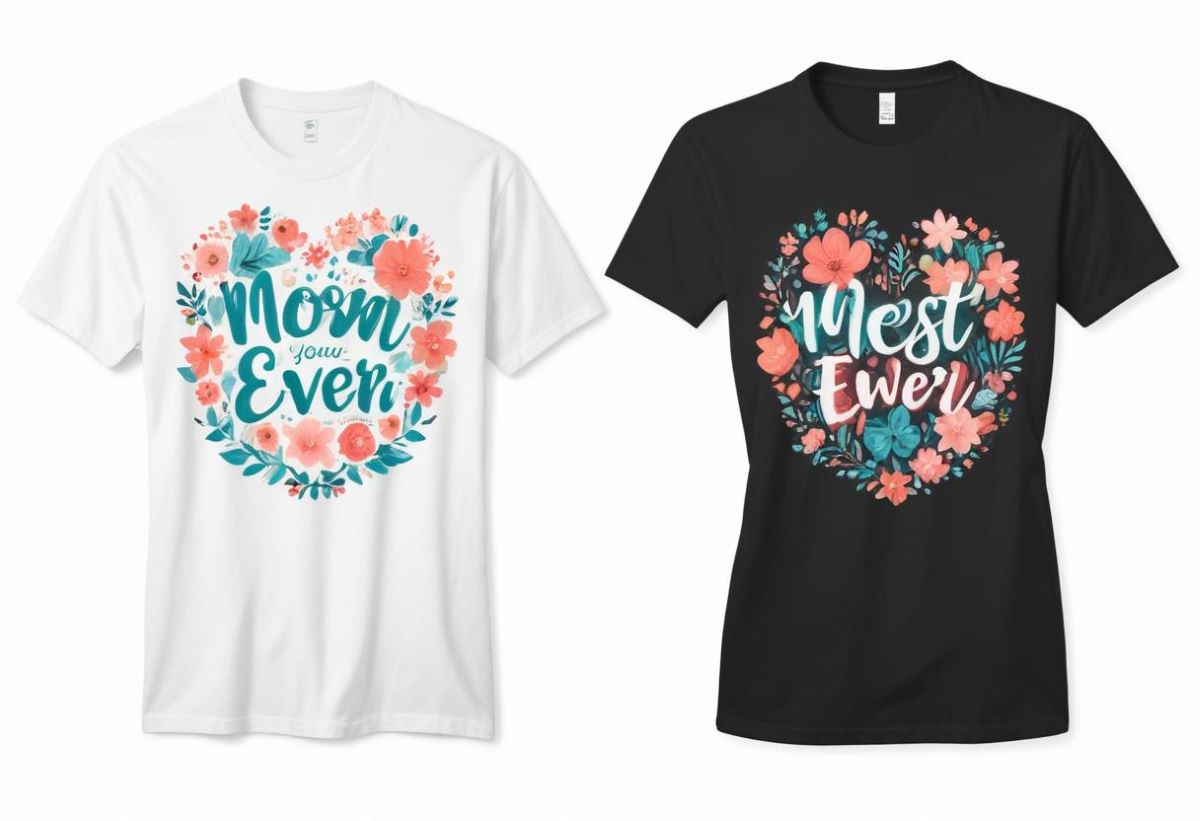DTF transfers, or Direct to Film transfers, represent a groundbreaking advancement in the world of custom printing, delivering vivid designs and rich colors that make fabric creations truly stand out. However, individuals venturing into this innovative printing method often encounter common pitfalls that can compromise their results. From ensuring fabric is treated properly to adhering to DTF print care instructions, it’s essential to master these aspects for high-quality transfers. In this guide, we will shed light on key DTF printing tips that can help you elevate your craft while avoiding common mistakes with DTF transfers. By the end, you will be equipped to achieve stunning, durable prints that your customers will truly appreciate.
Direct-to-film printing has emerged as a revolutionary technique for applying designs onto fabrics, making it a popular choice among custom apparel makers and creative individuals alike. Known for its ability to yield bright colors and intricate patterns, this method also comes with its own set of challenges. Understanding effective practices such as consistent heat pressing and using high-quality materials can greatly enhance the overall transfer quality. By exploring tips on avoiding DTF errors and following proper print care instructions, users can ensure their creations not only look impressive but also stand the test of time. Embracing these alternative practices means that anyone can unlock their potential in the realm of film transfers.
Common Mistakes with DTF Transfers
When venturing into DTF transfers, it’s essential to recognize the common pitfalls that can compromise your results. Many beginners often overlook critical pre-treatment steps or fail to adjust their printer settings adequately. As a result, they end up with transfers that don’t adhere properly or that lose their vibrancy over time. Ignoring the necessity for thorough cleaning, drying, and using appropriate pre-treatment solutions can drastically affect the quality of DTF prints. Furthermore, if the printer settings are not optimized for DTF materials, colors may appear dull or inaccurate, impacting the overall aesthetic of the finished product.
Another frequent mistake involves choosing inferior-quality materials like DTF films and adhesive powders. While these cheaper alternatives may save costs initially, they can lead to disappointing, short-lived results. High-quality films and powders are designed specifically to ensure durability, excellent adhesion, and vibrant image reproduction. By investing in quality materials, you set the foundation for stunning designs that will stand the test of time and retain customer satisfaction.
DTF Printing Tips for Beginners
For those just starting with DTF printing, keeping a concise list of tips can greatly enhance your printing experience. Firstly, always conduct test prints to fine-tune your printer settings and verify the transfer quality. Utilize the right color profiles that match your printer and media specifications to ensure vibrant results. Moreover, don’t hesitate to reach out for advice or instructional resources — many online communities and forums are dedicated to DTF printing where sharing experiences can significantly speed up the learning curve.
Additionally, make it a habit to document successful print parameters along with any challenges faced during the process. This record becomes an invaluable resource as you refine your techniques. Embrace experimentation; try out different heat settings, fabrics, and adhesive powders to determine what yields the best results for your specific projects. Knowledge is key in DTF printing, and learning from both successes and mistakes will lead to improved outcomes.
Ensuring DTF Transfer Quality
Achieving high-quality DTF transfers hinges not only on the materials used but also on the entire printing process. From the initial pre-treating of fabric to the final pressing, each step contributes to the durability and appearance of the print. Consistency in heat pressure and duration is paramount; variations can lead to undesirable results like incomplete transfers or excessive stretching of the image. Regular calibration of heat press equipment will aid in achieving the perfect settings for your fabric type, further enhancing overall transfer quality.
It’s also critical to maintain a clean working environment. Dust and debris can easily compromise the transfer process, leading to imperfections in your finished product. Implement a routine cleaning schedule for both your printer and workspace. Additionally, always double-check that your DTF film and powder are stored under the right conditions to avoid degradation. By addressing these components, you can significantly boost the overall quality of your DTF transfers.
Heat Pressing Best Practices for DTF Transfers
Heat pressing is a make-or-break step in the DTF transfer process, and mastering this skill is essential for any successful printmaker. Always adhere to the manufacturer’s instructions regarding heat settings, as different materials require specific temperatures and pressure levels for optimal results. Test pressing is highly recommended — starting with fabric scraps allows you to adjust your technique accurately before committing to larger pieces. This practice not only minimizes waste but also provides a critical learning opportunity.
The timing of the heat press application is equally vital; over-pressing can damage the design, while under-pressing can lead to incomplete adhesion. When using a heat press, it’s advisable to use parchment paper or a protective cover sheet to prevent sticking and uphold the integrity of your machine. Furthermore, maintaining even pressure across the entire transfer area will ensure uniform adhesion and longevity of the design.
Post-Transfer Care Instructions for DTF Prints
Once you have successfully completed your DTF transfer, the next step is ensuring longevity through proper care. Many new users fail to inform customers about the right washing and drying techniques for DTF prints. It’s essential to emphasize that garments should be washed in cold water with a mild detergent and air-dried whenever possible. High heat can compromise the transfer’s integrity, leading to premature fading and deterioration, hence why it should be avoided.
To enhance customer experience and satisfaction, providing clear care instructions on labels or accompanying documentation is beneficial. This educates customers on the proper maintenance of their items and helps to preserve the vibrant designs you’ve worked hard to create. Ultimately, prioritizing post-transfer care can lead to better customer feedback and repeat business, solidifying your reputation in the DTF transfer market.
Avoiding DTF Errors for Long-Lasting Prints
Being aware of common errors during the DTF transfer process can save you both time and materials. Many users encounter problems due to inadequate preparation or patience. For instance, rushing through pre-treating the fabric or directly applying the transfer without assessing printer settings can yield disappointing results. To avoid these issues, take the time to ensure that each step is completed flawlessly, as preparation is the cornerstone of successful DTF printing.
Moreover, staying organized throughout the printing process will help minimize mistakes. Labeling materials, documenting settings, and maintaining a checklist of tasks can greatly reduce the likelihood of overlooking essential steps. Additionally, seeking feedback from peers who have experience with DTF printing will provide valuable insights to refine your technique and avoid common pitfalls. By remaining diligent and proactive, you can produce prints that not only look fantastic but also last long.
Frequently Asked Questions
What are the most common mistakes with DTF transfers?
The most common mistakes with DTF transfers include inadequate pre-treatment of fabric, incorrect printer settings, neglecting film and powder quality, inconsistent heat pressing, and ignoring post-transfer care instructions. Addressing these issues can greatly enhance the quality and durability of your DTF prints.
How can I improve DTF transfer quality?
To improve DTF transfer quality, ensure proper fabric pre-treatment, use high-quality DTF films and adhesive powders, adjust your printer settings for optimal color and resolution, maintain consistent heat pressing techniques, and follow post-transfer care instructions diligently. This combination will yield vibrant and long-lasting prints.
What are the printer settings needed for DTF printing?
For DTF printing, it’s crucial to choose the right color profile designed for DTF to ensure accurate colors and set your printer to a high DPI for detailed prints. Testing various settings before final runs can also help optimize results.
What care instructions should I follow for DTF printed garments?
For DTF printed garments, always wash in cold water and avoid bleach. Air drying is recommended, and if using a dryer, choose a low heat setting. Providing clear care instructions on labels helps customers maintain the integrity of their garments.
What are DTF printing tips to avoid errors?
To avoid errors in DTF printing, start with a clean, pre-treated fabric, use high-quality film and powders, calibrate your heat press settings, and conduct test prints. Consistency in these areas will minimize mistakes and enhance the final product.
How does pre-treatment affect DTF transfers?
Pre-treatment is essential for DTF transfers as it ensures better adhesion of the transfer to the fabric. Proper pre-treatment helps prevent issues like peeling and fading, thus increasing the longevity and vibrancy of your DTF prints.
| Mistake | Description | Best Practices |
|---|---|---|
| Inadequate Pre-Treatment | Poor preparation of fabric can lead to adhesion issues and transfer quality. | – Clean the fabric regularly. – Ensure it’s dry and wrinkle-free. – Use pre-treatment solutions as needed. |
| Incorrect Printer Settings | Using incorrect settings can lead to color and resolution issues in prints. | – Select the right color profile for DTF. – Adjust to higher DPI for better details. – Conduct test prints to refine settings. |
| Neglecting Film and Powder Quality | Using low-quality materials can affect the final transfer appearance and durability. | – Invest in high-quality DTF films. – Use reliable adhesive powders for better adhesion. |
| Inconsistent Heat Pressing | Inconsistent or incorrect pressing can cause uneven transfers. | – Calibrate heat press according to manufacturer guidelines. – Test small samples before main application. – Monitor pressing time and pressure carefully. |
| Ignoring Post-Transfer Care Instructions | Overlooking care instructions can lead to premature wear and loss of quality. | – Advise on cold washing and no bleaching. – Recommend air drying or low heat, if necessary. – Provide clear care labels to customers. |
Summary
DTF Transfers have become increasingly popular for producing vibrant and intricate designs on various fabrics. To maximize the potential of your DTF transfers and ensure lasting results, it’s essential to avoid common pitfalls such as inadequate pre-treatment, incorrect printer settings, and neglect of heat pressing techniques. Understanding the importance of using quality materials and following post-transfer care instructions can significantly enhance the longevity and aesthetic appeal of your prints. By implementing the practices discussed, you can achieve stunning results that resonate with your audience and establish a reputable presence in the printing market.



